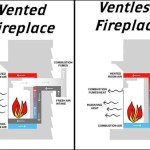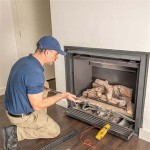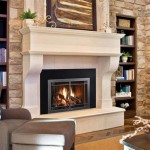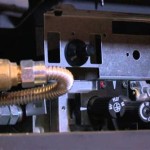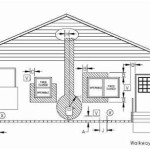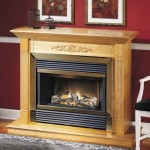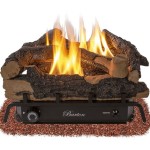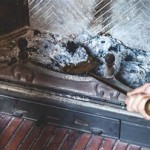Faux Fireplace Logs: An Illuminating Guide to Realistic Flame Alternatives
The allure of a crackling fire has captivated humanity for centuries, offering warmth, ambiance, and a focal point for gatherings. However, the traditional wood-burning fireplace comes with inherent challenges, including the need for wood sourcing, storage, cleaning, and adherence to local regulations. Faux fireplace logs offer a compelling alternative, providing the aesthetic appeal of a fire without the associated complexities.
This article explores the world of faux fireplace logs, delving into their diverse types, materials, operational mechanisms, and the benefits they offer. It aims to provide a comprehensive understanding of this increasingly popular home décor and heating solution.
Understanding the Variety of Faux Fireplace Logs
The term "faux fireplace logs" encompasses a broad range of products designed to mimic the appearance of burning wood within a fireplace setting. These fall into several distinct categories, each with unique characteristics and functionalities.
Electric Fireplace Logs: These logs are perhaps the most common type. They utilize electric elements to generate heat and often incorporate LED lighting to simulate flickering flames. The realism varies significantly across different models, with higher-end options employing advanced projection technologies and realistic log molds.
Electric logs are typically self-contained units that can be placed directly into an existing fireplace opening. Operation is simple, often controlled by a remote, allowing adjustments to flame intensity, heat output, and even sound effects mimicking the crackling of a real fire. They require access to a standard electrical outlet, and some models may need professional installation for proper wiring.
Gas Fireplace Logs: Designed for use with gas fireplaces (natural gas or propane), these logs are crafted from ceramic or refractory cement to withstand the high temperatures produced by the gas burner. They do not produce heat themselves but rather distribute the heat generated by the gas flames.
Gas logs offer a visually appealing and relatively low-maintenance alternative to burning real wood in a gas fireplace. They come in various styles, mimicking different types of wood, and are often designed to create realistic flame patterns and ember beds. Installation typically requires professional assistance to ensure proper connection to the gas line and safe operation.
Ethanol Fireplace Logs: These logs are used in ventless fireplaces that burn ethanol fuel. They are usually made from concrete or ceramic materials and designed to withstand the heat produced by the burning ethanol. Ethanol logs do not produce soot, smoke, or ash, making them a cleaner-burning alternative to wood.
While ethanol fireplaces offer a realistic flame and require no venting, they do produce less heat than gas or electric fireplaces. The cost of ethanol fuel can also be a factor to consider. Ethanol logs are typically arranged around the burner unit and require careful handling of the fuel during refills.
Decorative Fireplace Logs: Unlike the previous categories, decorative logs are primarily for aesthetic purposes and do not generate heat. They are often made from lightweight materials, such as foam or plastic, and are designed to create a visually appealing fireplace display. These logs are suitable for fireplaces that are not in use or as a decorative element in conjunction with other heating solutions.
Decorative logs can be arranged in various configurations and often incorporate artificial embers or glowing elements to enhance the visual appeal. They are a cost-effective way to add ambiance to a room without the complexities of a functioning fireplace.
Materials and Construction of Faux Fireplace Logs
The materials used in the construction of faux fireplace logs vary significantly depending on the type and intended use. The choice of materials directly impacts the log's durability, realism, and heat resistance.
Ceramic: Ceramic is a common material for gas and ethanol fireplace logs due to its ability to withstand high temperatures. Ceramic logs are often hand-painted to mimic the appearance of real wood, with intricate details that enhance their realism. The material is durable and resistant to cracking or warping under heat.
Refractory Cement: Similar to ceramic, refractory cement is a heat-resistant material used in gas fireplace logs. It offers excellent durability and is capable of withstanding prolonged exposure to high temperatures. Refractory cement can be molded into various shapes and textures, allowing for realistic log designs.
Plastic: Plastic is primarily used in electric and decorative fireplace logs. It is a lightweight and cost-effective material that can be easily molded into various shapes. While plastic logs are not heat-resistant, they can be coated with flame-retardant materials to enhance their safety. The realism of plastic logs can vary depending on the quality of the mold and the finishing techniques used.
Foam: Foam is another lightweight material used primarily in decorative fireplace logs. It is inexpensive and easy to shape, making it suitable for creating large and visually appealing log displays. Foam logs are typically coated with paint or textured finishes to mimic the appearance of wood. They are not heat-resistant and should not be used in functioning fireplaces.
Metal: Some electric fireplace logs incorporate metal components, such as the heating element, frame, and decorative accents. Metal provides structural support and heat conductivity in electric logs. The type of metal used varies depending on the manufacturer and the intended application.
Glass: Tempered glass is sometimes used in electric fireplaces as a protective screen or to create a reflective surface that enhances the flame effect. Glass is heat-resistant and provides a clear view of the simulated flames.
Advantages of Using Faux Fireplace Logs
Faux fireplace logs offer several advantages over traditional wood-burning fireplaces, making them an attractive option for homeowners seeking the ambiance of a fire without the associated drawbacks.
Convenience and Ease of Use: Unlike wood-burning fireplaces, faux logs require no chopping, stacking, or storing of wood. Electric and gas logs can be easily turned on and off with the flip of a switch or the press of a button. Ethanol logs require the addition of fuel, but this process is relatively simple and clean.
Reduced Maintenance: Faux logs eliminate the need for cleaning ashes, soot, and creosote, which are common byproducts of wood-burning fireplaces. Electric and gas logs require minimal maintenance, typically involving occasional dusting or cleaning of the glass screen. Ethanol logs require occasional cleaning of the burner unit.
Safety: Faux logs are generally safer than wood-burning fireplaces, as they eliminate the risk of sparks, embers, and uncontrolled fires. Electric logs have built-in safety features, such as overheat protection, while gas logs require professional installation to ensure safe operation. Ethanol logs require careful handling of the fuel to prevent spills and fires.
Environmental Friendliness: Faux logs produce no smoke, soot, or harmful emissions, making them a more environmentally friendly alternative to wood-burning fireplaces. Electric logs use electricity, which can be sourced from renewable energy sources. Gas logs produce some emissions, but they are significantly lower than those of wood-burning fireplaces. Ethanol logs burn cleanly, producing primarily water vapor and carbon dioxide.
Cost-Effectiveness: While the initial cost of purchasing faux fireplace logs may be higher than that of a wood-burning fireplace, the long-term costs can be lower. Faux logs eliminate the need to purchase wood, which can be expensive and time-consuming. Electric logs consume electricity, but the cost can be relatively low depending on the usage and electricity rates. Gas logs require a gas supply, but the cost is often lower than that of wood. Ethanol fuel can be more expensive than gas or electricity, but it is a cleaner-burning alternative.
Versatility: Faux fireplace logs can be used in a variety of settings, including homes, apartments, and even outdoor spaces. Electric logs can be placed in any room with an electrical outlet, while gas logs require a gas line connection. Ethanol logs can be used in ventless fireplaces, allowing for greater flexibility in placement. Decorative logs can be used to enhance the visual appeal of any fireplace, regardless of whether it is functional.
Realistic Appearance: Modern faux fireplace logs are designed to mimic the appearance of real burning wood with remarkable accuracy. Advanced molding techniques, hand-painted details, and realistic flame effects create a convincing illusion of a traditional fire. The realism of faux logs has improved significantly in recent years, making them an increasingly popular choice for homeowners seeking the ambiance of a fire without the drawbacks.

Faux Log Stack

All About Artificial Firelogs Raleigh Nc Mr Smokestack Chimney Service

Fake Burning Logs For Fireplace Electric

How To Make A Faux Fireplace Insert With Real Logs Interior Frugalista

Faux Log Stack

24 Cozy Faux Fireplace And Mantel Decor Ideas Shelterness

Diy Faux Fireplace Ideas She Shed Living

15 Stunning Diy Fake Fireplace Ideas To Make Now Twelve On Main

Diy Faux Wood Log Fireplace Screen A Kailo Chic Life

How To Make A Faux Fireplace Insert With Real Logs Interior Frugalista
Related Posts

